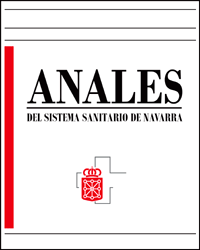“Neurorestorative” cell therapy in Parkinson’s disease: an unresolved debate
DOI:
https://doi.org/10.23938/ASSN.0482Keywords:
Neurodegeneración. Dopamina. Estimulación cerebral profunda. Vía nigroestriada.Abstract
At present there is great enthusiasm over the perspectives deriving from so-called cell therapy in Parkinson’s disease. This enthusiasm has spread beyond the ambit of the medical community, reaching the general public, and has been fuelled by a considerable ethical and political debate, sidestepping the need for a really scientific analysis of the real qualities and limitations of treatment with stem-cells in neurodegenerative diseases. Parkinson’s disease is frequently observed from a simplistic perspective, as a mere neurodegeneration of the nigrostriatal dopaminergic pathway. This viewpoint encompasses different designs that tend to replace the lack of dopamine in the striatum through the use of different types of cell therapy. In this respect, it is important to indicate, on the one hand, the multisystemic and generalised nature of the disease and, on the other, the progressive character of the neurodegenerative process of Parkinson’s disease. With this approach, to claim that the mere replacement of striatal dopamine through replacement cell therapy can correct the generalised and progressive character of the disease is a fanciful aspiration, which can only contribute to generating unfounded expectations in the general public. This article attempts to set out from a purely scientific point of view the doubts over the expectations created by these new therapeutic designs.Downloads
Downloads
Published
How to Cite
Issue
Section
License
La revista Anales del Sistema Sanitario de Navarra es publicada por el Departamento de Salud del Gobierno de Navarra (España), quien conserva los derechos patrimoniales (copyright ) sobre el artículo publicado y favorece y permite la difusión del mismo bajo licencia Creative Commons Reconocimiento-CompartirIgual 4.0 Internacional (CC BY-SA 4.0). Esta licencia permite copiar, usar, difundir, transmitir y exponer públicamente el artículo, siempre que siempre que se cite la autoría y la publicación inicial en Anales del Sistema Sanitario de Navarra, y se distinga la existencia de esta licencia de uso.








